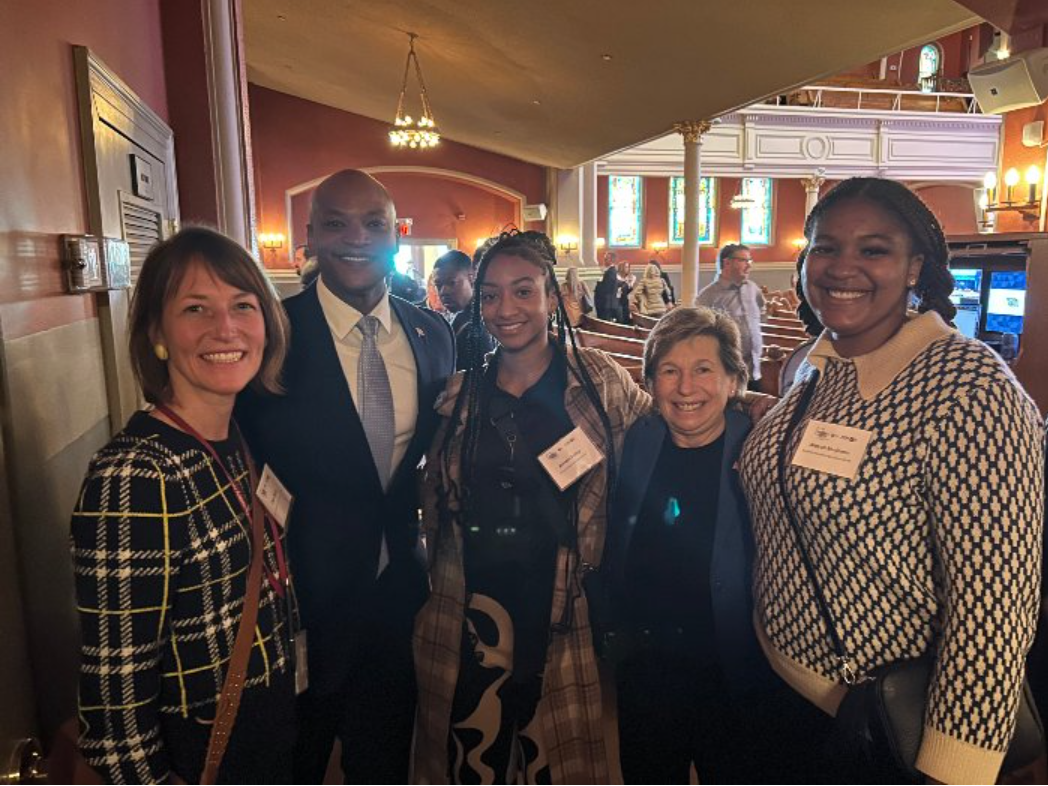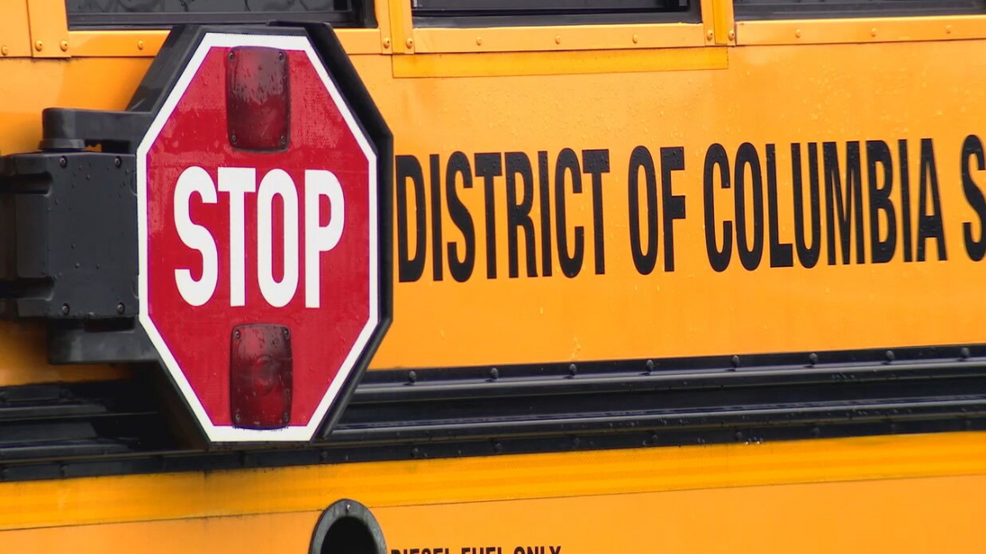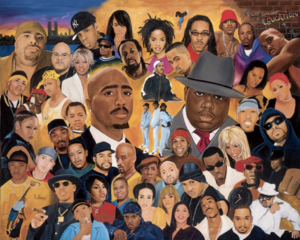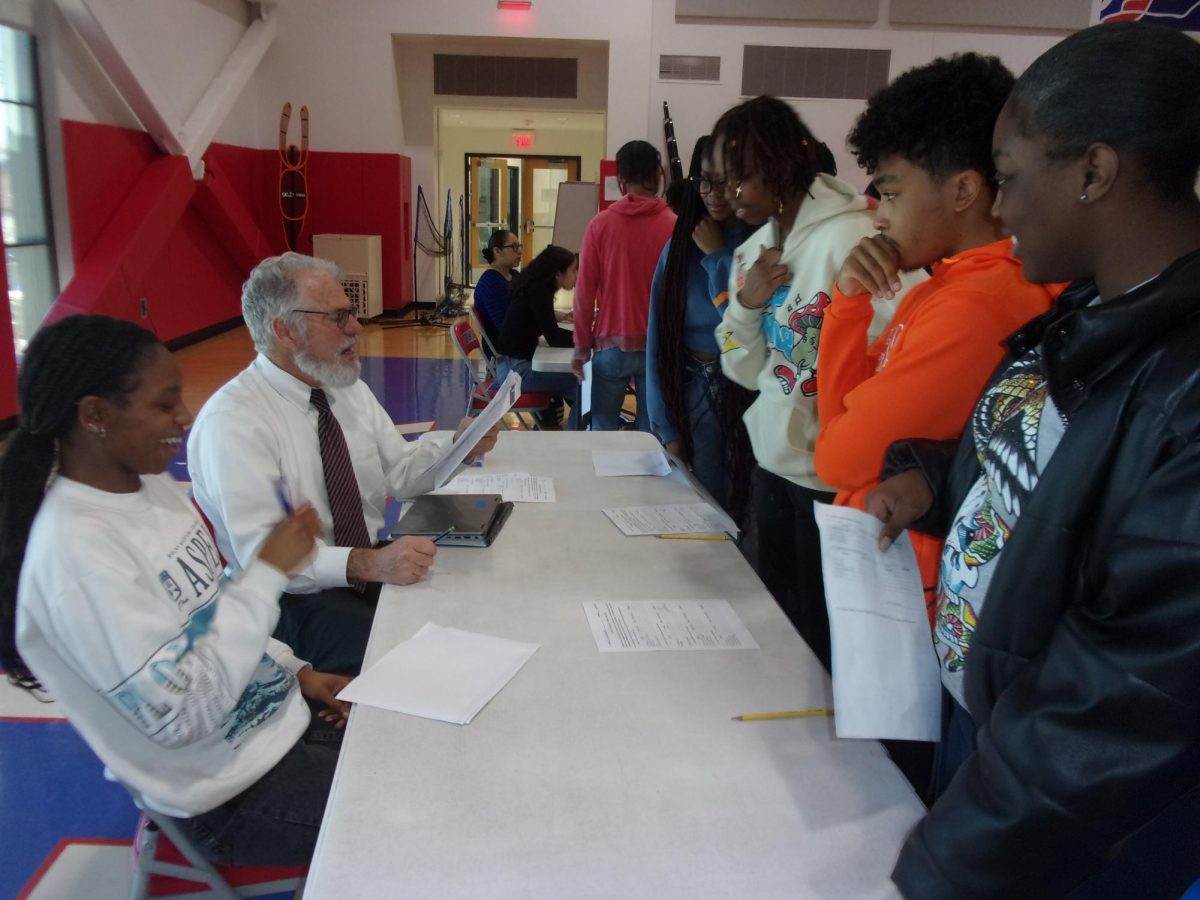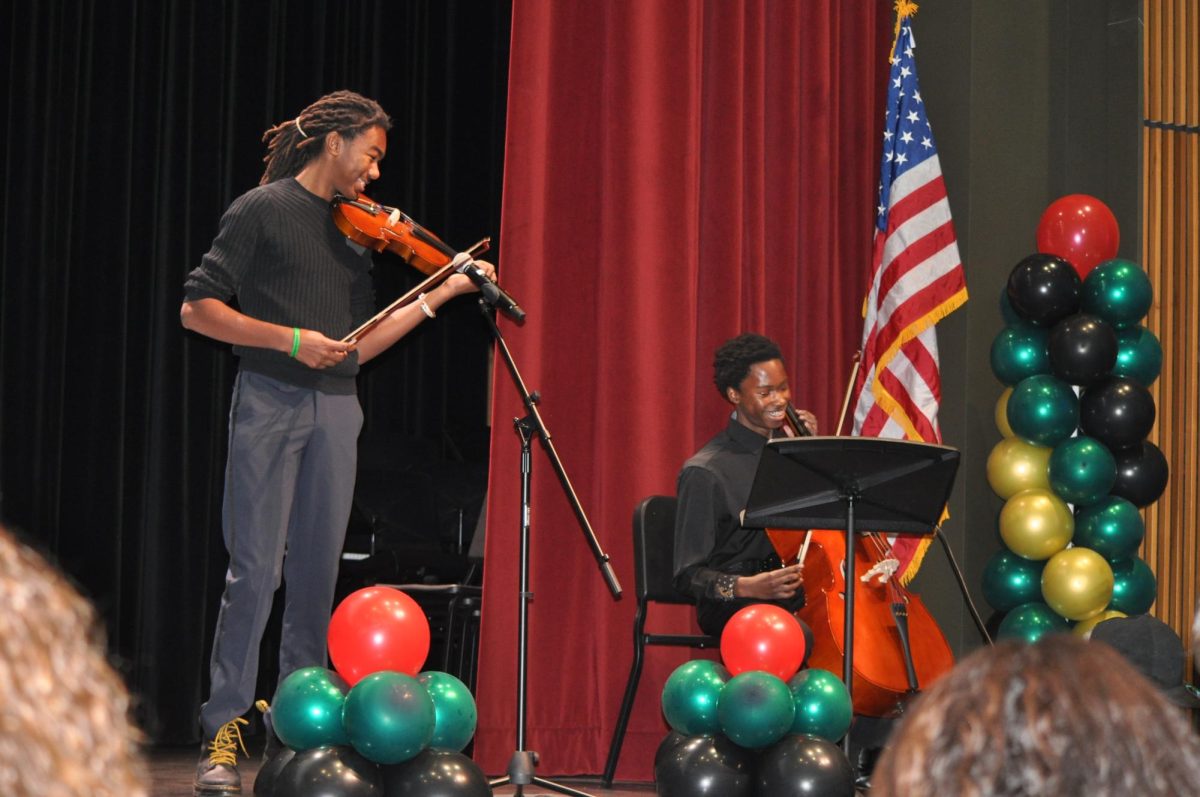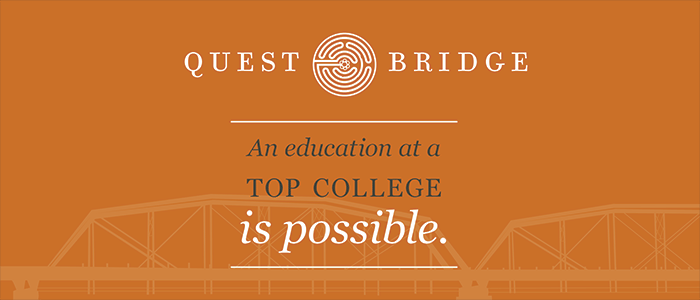This year, Banneker’s DC History and US Government classes participated in the Mikva Challenge’s annual public speaking program known as Project Soapbox. After selecting a topic they were passionate about, students created an impromptu speech that they then presented in front of the class and, in some cases, to the entire school. With topics varying from gun violence, to the sexualization of young women, to depression, each student presented their speech for an initial grade in their class. After the class competition, a school-wide competition was held with the opportunity to earn a chance to compete against students from several other schools throughout the city. Trophies commemorating their success were awarded to the top ten performers in the District of Columbia. Shemar Glasgo and Kingston Fuller were the two Banneker students who landed in the top 10. Read below a few of the most memorable speeches given by Banneker students, published in the draft forms shared with the Train of Thought.
Underfunded Schools in Communities of Color
Sofia Ralph, 10 Grade
Poverty is pervasive in Washington, D.C. There are an estimated 8300 reported homeless families in DC schools with about 9 out 10 impoverished families being Black families. How is a parent to support the materials of their children while struggling to pay bills?
Poverty is compounded by race. White families (avg abt. $237,000) can earn up to 4 times the income of a Black household (avg abt. $61,500) and more than twice the amount of a Latinx household (avg abt. $104,800). Imagine a world where the education for students of color was as important as it is for white children. It already is that way, you may add. Why is it that since the integration of students of color into schools, families of color have emphasised sending students to “white schools.” It is a reflection of the basic necessities a school may bring. Pencils, Pens, Proper Textbooks, etc. In big cities especially, such as New York and DC, the distinction between those who can secure school supplies and those who cannot be seen in neighborhoods and districts educating wealthier families. Growing up in a city like New York, I have always been fortunate enough to secure school supplies without having to worry about going to school without the resources, which is why I can understand its importance. This is not applicable to many families without other pressing needs, even in a school like Banneker where excellence is seen throughout many economic classes.
In actuality, the cost of maintaining materials for students and applications costs more than one would expect. The problem is the increasing lack of these materials for students leads to the unwillingness to learn. For example, how fun is it to be yelled at by a teacher for not having a pencil? Not fun, right? But what if you did not have the money to spend on school supplies every year. According to the Huntington Backpack Index, yearly school supplies and technology can cost up to $1017 for elementary school students, $1277 for middle school students, and even $1668 for high school students. As expensive as this is for one child, imagine having to buy these for multiple children, replenishing annually. Not only for the families providing for the children, but the teachers who have the same salary as families in lower income communities but remain involved in buying school supplies for students.
It is of the utmost importance to be more proactive. The same people who are undergoing poverty could be your peers or close friends. Even if you don’t have the money, take charge by donating to school supply drives or even being more mindful when seeing pencils or resources scattered across floor. When using new supplies, be reminded that there are many who could not afford all the resources you may have and try to preserve those resources as long as they last, even if that means using less glue when applying the adhesive, or even carrying around 1-2 pencils to ensure that they get used to the best ability. Teachers, it is important to not associate a students’ lack of school supplies with inattentiveness. There are several factors that can impact not having the necessary school supplies, but students should not feel displaced for being unable to address this issue daily. To the board of education, set aside money to create a budget for DCPS teachers to limit the out-of-pocket expenses of school resources. The money may be repurposed, but it would be a service to bettering the education for our future. Together we can work to give students the resources needed to perform to their best abilities.
Gun Violence in the United States
Amelia Hannagan, 10th Grade
What is normal? For me it’s going through the metal detector every day to get into school and it has been like that since 6th grade. I was 4 when 20 children were shot and killed at Sandy Hook Elementary School. Ever since then, my school hallways have had security guards. It has become normal to have lockdown drills where we practice where we would hide if there was an active shooter. However, these things are not normal in other high-income countries. This is because the US has 57 times the amount of school shootings as all other major industrialized countries combined. The US accounts for 82% of firearm deaths in high-income countries. As of October, there had been 560 mass shooting in the United States this year. Firearms are the leading cause of death for children ages 1-18. A child in America is more likely to be killed by a gun than a car accident. Guns are needlessly killing thousands of people, thousands of children. This shouldn’t be normal.
So, what is the difference between the US and other comparable countries? – Gun control. The story is always the same, a country suffers a devastating loss of life and then they act. Australia, South Africa, New Zealand, The United Kingdom, they have all passed legislation for gun control and seen dramatic drops in gun deaths in the following years. Yet the US government has seen tragedy after tragedy and hasn’t made an effort to prevent future death. Only 17 states and DC require universal background checks to purchase a firearm. Any private gun sales in the other 33 are not subject to regulation. Of the states with the lowest gun death rates 4 out of 5 require universal background checks, 4 out of 5 have banned assault rifles, and 3 out of 5 have implemented both policies. None of the states with the highest rates of gun deaths have these policies. While there is not direct causation shown, a pattern is clear: Stricter gun control = less preventable death. Gun control has also reduced suicides using guns, which is the leading method of suicide. In states that require universal background checks for gun purchases there are 48% less suicides by guns while having nearly identical rates for other methods.
The problem in this country is accessibility. The National Institute of Justice found that 77% of individuals who engaged in mass shootings purchased their guns legally and 80% of individuals who engaged in school shootings stole their guns from their families. There are an estimated 120.5 firearms for every 100 residents in the United States. Gun violence only continues to go up in the United States. There must be change. Gun deaths are preventable deaths. I urge you to contact your representative. Advocate for stricter gun legislation. Fight for mandated universal background checks and the ban of assault rifles. Let’s make a new normal where every week kids aren’t killed in school. A normal where everyday someone doesn’t lose their son or daughter to a gun.
Financial Barriers of College
Alayah Benjamin, 12th Grade
Why must individuals pay their way through college just for a higher level of careers? Many households paying paycheck after paycheck just to get their students through just one year of college. The pursuit of higher education has become increasingly crucial in today’s society. However, the financial barriers of college often cause many individuals from accessing benefits of a college education. According to Inside Higher ED, nearly 40% of students say that financial aid is a barrier to their participation on campus life, compared to the 29% of others not receiving financial aid. These financial barriers can significantly impact an individual’s ability to attend college and obtain a degree.
The one, if not the biggest barrier of college is the cost of tuition. The constantly rising cost of tuition has made college unattainable for many individuals, especially those from low- income households. A report by College Board, states the average cost of tuition from the previous academic year were almost $50,000 at private colleges, $11,000 for state residents at public colleges, and nearly $30,000 for out-of-state residents at public colleges. Just the average middle-class household, they’re paying the same amount of income as the cost of private institution YEARLY! For many families, these exorbitant costs are simply not manageable, forcing students to either take out substantial student loans or forgo a college education altogether.
In addition to tuition, the cost of textbooks, housing, and other living expenses can further contribute to the financial barriers of college. Textbooks, costing hundreds or even thousands of dollars per semester, creates an additional financial burden for students. Not mentioning, all the other things outside of college you would be paying for like food, housing, and household supplies.
Furthermore, the lack of financial aid and scholarship opportunities also contributes to this situation. While financial aid is intended to help students cover the cost of their education, many students struggle to access sufficient financial aid to pay off tuition and living expenses due to scholarships being limited and highly competitive, leaving many students without access to financial assistance.
As a senior this year, the financial barrier has made me think differently on college. I never believe that at the young age I am, I would have to wonder how much work I would be putting into my parent, just to get me the dream career I desire to have. Recently my family of 8 became a family of 3, as my parents separated. This has taken a toll of me mentally on how I will be able to get the funds to financially be able to attend college. And having to rely on last year’s taxes might not benefit my circumstances being eligible for scholarships, financial aid, and so much more. This has became not only a exciting year, but also a time where I created fear and question myself if I will need to help my mother, get a job, all for college. As I give this speech today, many seniors are doubting their ability to go to college because of financial circumstances. Addressing the financial barriers of college is essential to ensuring that all individuals like me and many other seniors have equal access to higher education. Such as reforming the financial aid system to make a higher availability of need-based aid and increasing the availability of scholarships to provide more opportunities based on personal aspects can benefit students going to a higher education.
Overall, the financial barriers of college have a profound impact on individuals’ ability to access higher education. And although the world revolves around the saying “money is the root of our problems” it doesn’t have to be. Addressing these barriers can show how dedicated students are to go to college. With this, we can create a more inclusive higher education system that empowers all individuals to pursue their academic and career aspirations And not leave students with the fearful question, “Will I be able to afford for college”?



